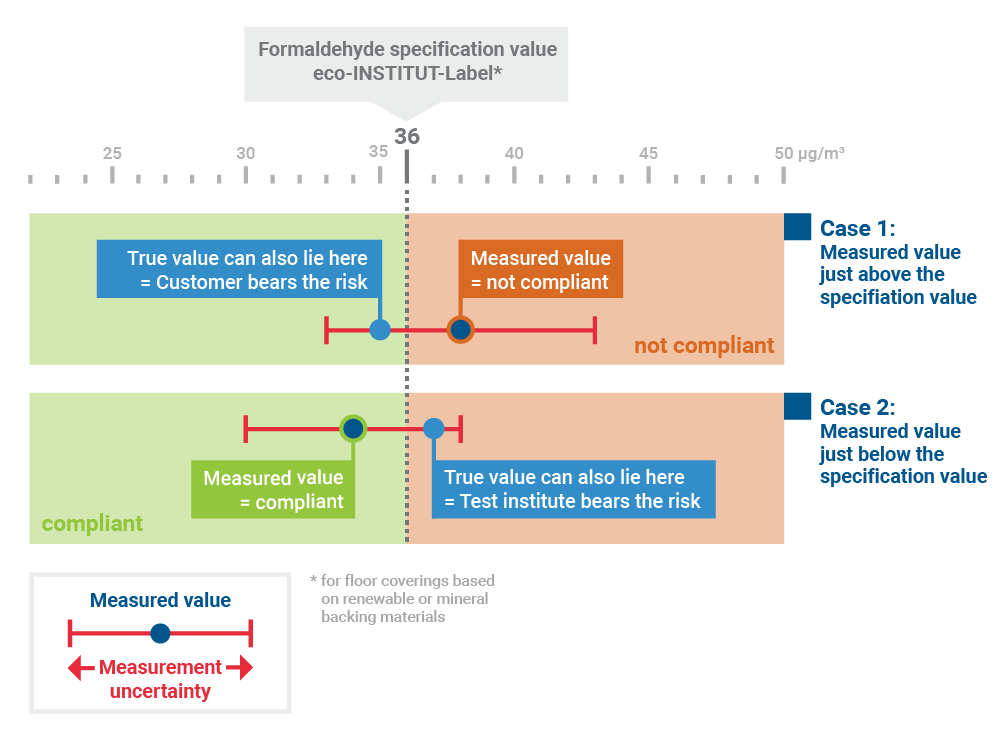No measured value is exact; every laboratory result also contains measurement uncertainty – the true value may therefore be either a little higher or lower. How does eco-INSTITUT deal with this? How is it decided whether a specification (e.g. from the eco-INSTITUT-Label) is met or not, especially when results are scarce?
The topic of measurement uncertainty particularly plays a role when measurement results are to be evaluated – e.g. according to the specifications of a quality label. This is because measurement uncertainty can vary depending on the type of measurement or the substance measured. To what extent can the measured value deviate upwards or downwards? The measurement uncertainty defines this range in which the “true” value lies with a certain probability.
An example: A customer has his floor covering tested and evaluated according to the eco-INSTITUT-Label criteria. An emissions test is carried out – formaldehyde is determined after 28 days. The eco-INSTITUT-Label has a specification value of ≤ 36 µg/m³.
Case 1:
The measured formaldehyde value is 38 µg/m³ and is thus just above the specification value. The measurement result is evaluated as “non-compliant” with the criteria of the eco-INSTITUT-Label.
If the 12% measurement uncertainty for formaldehyde is taken into account, the true measured value could be between 33 and 43 µg/m³ – and thus also below the specification value. In this case, the product would theoretically have fulfilled the specification. The customer risks that his product, despite complying with the specification, will still be assessed as “non-compliant
Case 2:
The measured formaldehyde value is 34 µg/m³ and is thus just below the specification value. The measurement result is assessed as “compliant” with the criteria of eco-INSTITUT-Label.
With measurement uncertainty, this means a range from 30 to 38 µg/m³ – the real value could therefore also be above the specification value. In theory, the product may not have fulfilled the specification in this case. The testing body risks that the product does not comply with the specification, nevertheless being assessed as “compliant”.
The risk that a product is incorrectly assessed as “compliant” or “non-compliant” is shared equally between the customer and the testing body. For this reason, this procedure is also referred to as the “shared risk of measurement uncertainty” (so-called Shared Risk Approach).

Image: Karin Roth